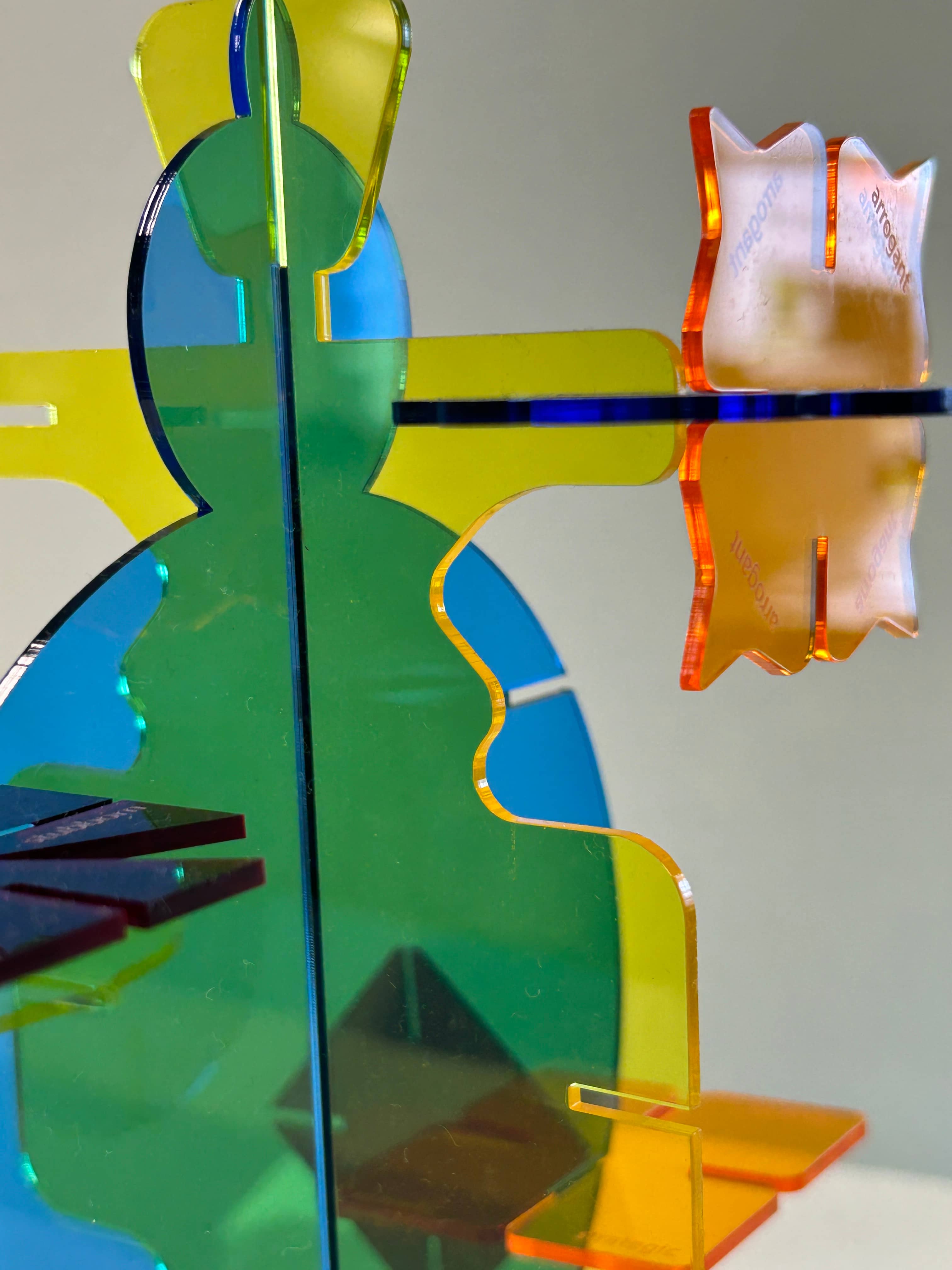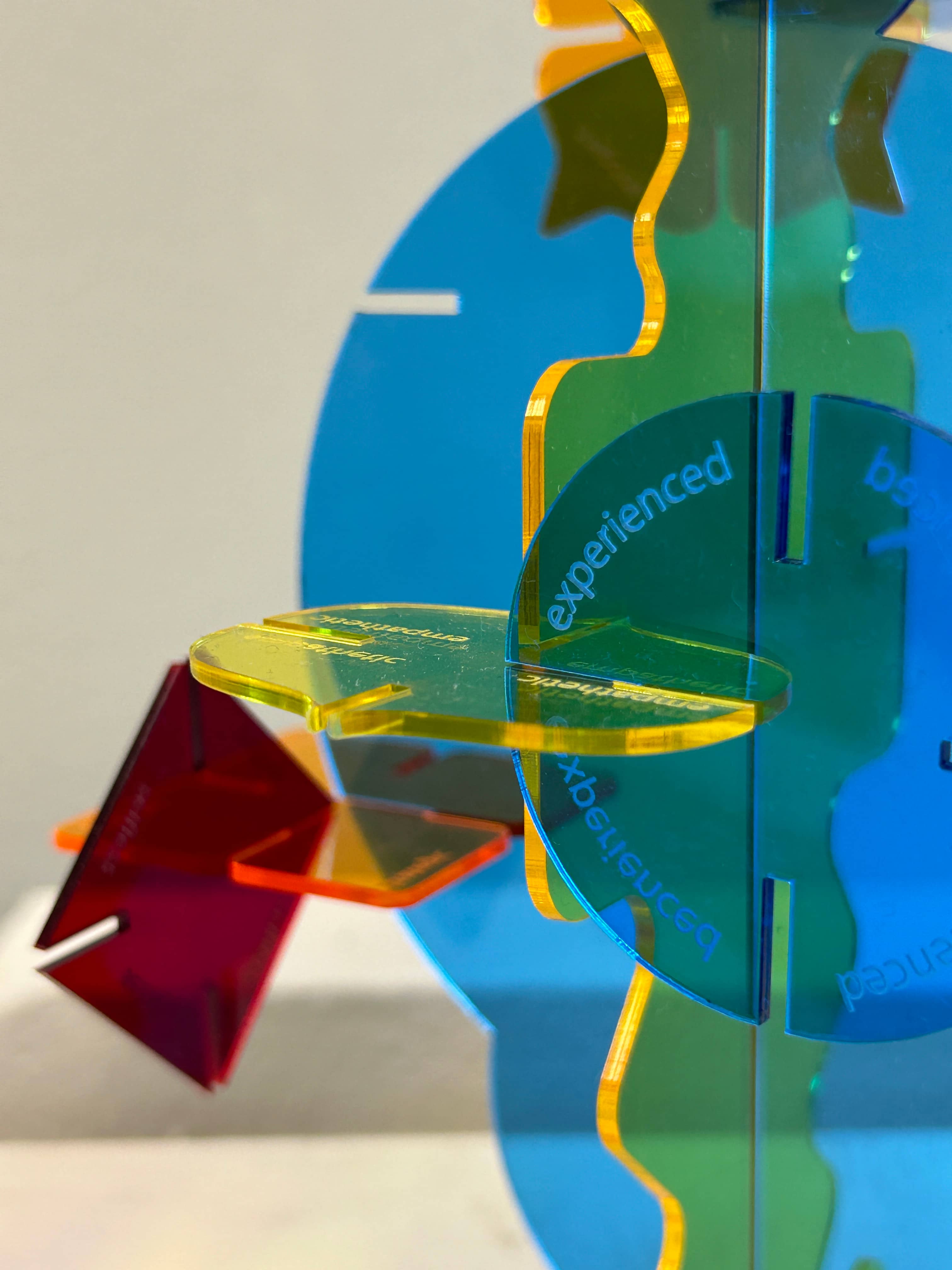Characraft
Julienne Grace Ng Lim

Characraft is an interactive, play-based tool for character creation, designed to stimulate a multisensory experience, particularly engaging the visual and tactile senses throughout the process. By integrating various modes of communication—linguistic, spatial, and visual—the tool offers both an innovative approach for beginners to learn creative writing through Jungian archetypes; and a familiar, yet fresh way for novice writers to think about their craft in more playful ways. Founded on the notion that sensory engagement is pivotal to fostering creativity, Julienne’s project seeks to facilitate a more holistic design encounter that reshapes the ways in which writers develop characters and, consequently, their stories.
Was there anything that led you to notice this gap between the uni-sensory nature of writing and the creativity of writers and their works?
I feel like even as a reader, when I'm trying to understand the text, the way that I do it is visually. So I try to imagine it in my head. Even though there's different kinds of learners and readers (people sometimes like audiobooks more and everything), I think that when people read, imagination is a big part of it. Then I realised that the way you imagine is visual, and because of that, I started to think maybe if you can change the nature of how you write, you can change the nature of the story that you make.
Could you elaborate a little more on your play-based writing tool and how you imagine writers engaging with it during their character creation process?
It's about writing and creating characters through Jungian archetypes. So
there's 12 archetypes. They're divided into four sets with three archetypes each. So what I did is
for each set, I gave it a primary shape based on the qualities of that archetype. So for example,
there's a set called Yearning for Paradise. That's their underlying motivation and the archetypes in
that set are very innocent and optimistic, so I gave it a circle. Based on shape psychology, it's very welcoming and warm. Then, within each archetype, there's a set
of strengths and weaknesses. I made a shape for each strength and weakness within each type.
Based on shape psychology, it's very welcoming and warm. Then, within each archetype, there's a set
of strengths and weaknesses. I made a shape for each strength and weakness within each type.
It's a little complicated but there's basically a shape for the overall set which makes
the silhouette. The whole concept of
writing through Jungian archetypes is that you have a starting base. However, you have to make it
your own. The tool gives users the possibility of
mixing and matching because of the colour code and shape. They know,
"oh this trait belongs to this person but what if I want this person to be a little different?
So let me take a trait from this kind of archetype." There's supposed to be an instruction
manual that gives people all these kinds of combos.
The whole concept of
writing through Jungian archetypes is that you have a starting base. However, you have to make it
your own. The tool gives users the possibility of
mixing and matching because of the colour code and shape. They know,
"oh this trait belongs to this person but what if I want this person to be a little different?
So let me take a trait from this kind of archetype." There's supposed to be an instruction
manual that gives people all these kinds of combos.
How did you come up with this idea of creating a play-based tool? Was there any lightbulb moment or a build-up that led to this?
It's kind of a gradual build up. The first thing that I knew was that I didn't want it to be text based. I wanted to add multi-sensory engagement. Didn't really know how to do that though. I was looking at other design projects, and I found they were mostly card-based which is still interesting enough. It's very colourful and it helps you make ideas, but I thought it was kind of flat still. Then I started looking at modernist toys because at that time, apparently they saw play as something very modular and reliant on things like construction and assembly. So it encourages freedom and creation and everything.
I started looking into the concept of play and how play fosters creativity and other things like that. Then I looked into the difference between card-based play versus building based play. I think it's quite apparent already, like, playing Uno versus playing Jenga. I really liked building more just because there's more possibility for multi sensory engagement. Everything after that was just gradual progression.
See Tactile Playgrounds, and Tangible Theatre